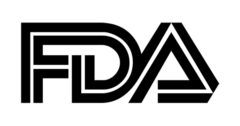
Conducting clinical trials outside of the U.S. is an increasingly attractive option for device companies due to lower costs and less-complicated regulatory hoops in certain geographies.
Taking note of this growing trend, FDA recently released a draft guidance on the topic to outline what data FDA will and will not accept from ex-U.S. studies for PMA applications. In the guidance, “Acceptance of Medical Device Clinical Data from Studies Conducted Outside the United States,” FDA describes how to develop data that can be used to support approval or clearance of a device in the U.S.
“The number of IDE applications and submissions for marketing authorization supported by OUS clinical trials has increased in recent years and will likely continue to increase in the future,” the guidance states. “This increasing globalization of clinical trials presents challenges to both U.S. and foreign regulators. Among the challenges are resource constraints that impact the number of foreign clinical site inspections and unnecessary duplication of clinical studies and administrative burdens.”
FDA recommends that manufacturers that seek to conduct clinical trials outside of the U.S. ask the following questions to ensure that the data will support U.S. standards:
1. Do the human subject protection standards meet FDA’s applicable requirements?
For example, some foreign entities require that the device demonstrates safety and performance to support regulatory approval. The FD&C Act requires that data provide assurance of safety and effectiveness for PMA approval.
2. Are there differences between the foreign and U.S. clinical conditions?
For example, other countries may have different standards of care, clinical facilities and levels of clinical skill that could impact the data’s usefulness in supporting the safety or effectiveness of the device.
3. Are there differences between the regulatory expectations or study populations?
For example, other countries may have demographic differences. Race, ethnicity, age, gender and sex can affect the applicability of the study. When such differences arise, it’s recommended that manufacturers mitigate the differences or describe why the difference would not impact the device’s safety or effectiveness.
Regulatory experts David Lown, General Manager, and Kevin McGowan, Ph.D., Director, Regulatory Affairs from Musculoskeletal Clinical Regulatory Advisers (MCRA) said that, based upon their experience, FDA has been accepting ex-U.S. clinical data reaching back earlier than 2010. The recent guidance puts the practices on paper.
“There are some countries where high quality clinical data is attainable and there are other countries where it is more of a challenge,” McGowan says. “MCRA recommends to its clients that two of the most important requirements in determining the quality of data is 1) whether the study attains high patient follow-up, and 2) that patients are seen throughout the course of the clinical study at frequent intervals in order to generate enough clinical data to be acceptable to FDA. Additionally, when looking at international clinical data, the FDA frequently looks at whether the clinical study was run under a standard protocol and whether the patient population is similar enough to patients that are going to receive the device in the U.S. An additional consideration is whether the standard of care for medicine is the same as in the U.S.”
MCRA has seen an increase in studies performed in Western Europe, where clinical standards are similar to those in the U.S., as well as in Australia, South Africa and Israel. Device companies capture the clinical data for local regulatory approval as a first step and then determine if it can be used for FDA approval.
“When you move outside of the U.S. and work with international sites and surgeons, sponsors often encounter a vast difference in the research culture due to the difference in regulations that govern clinical investigations in those countries,” Lown says. “In order to run a clinical study per the FDA’s requirements outside the U.S., sponsors must be well versed in the FDA regulations and able to communicate these expectations to their research partners (the surgeons and their staff at OUS research sites). Secondly, they must maintain strong communication ties with the sites in order to ensure that they are conducting the study in accordance with FDA standards and maintaining all the regulatory records required to support the clinical data submission.”
What does this guidance mean for future FDA clinical data decisions?
“I don’t think we’re going to see any departures from their longstanding norm of the way that they’re looking at clinical data,” McGowan says. “However, I do think that the guidance does provide companies with transparency on those considerations that are needed when using OUS clinical data, without needing to initially correspond directly with FDA.”
“Whether it is U.S. clinical data or international clinical data, it is important to realize that FDA and reimbursement decision makers want clinical data from medical device companies of the volume and quality that other industries, such as pharmaceuticals, collect, in order to make decisions in today’s economic and regulatory environment,” Lown says. “Given that device companies have not historically been required to collect or financially budget these requirements, they believe that using international data may be an attractive alternative.”
FDA has issued a proposed rule that would require that foreign clinical studies that support PMAs, IDEs and 510(k)s be conducted to good clinical practice standards. Balancing premarket and postmarket data collection for PMAs also is amongst FDA’s 2015 priorities.
To access the full draft guidance document, click here.




